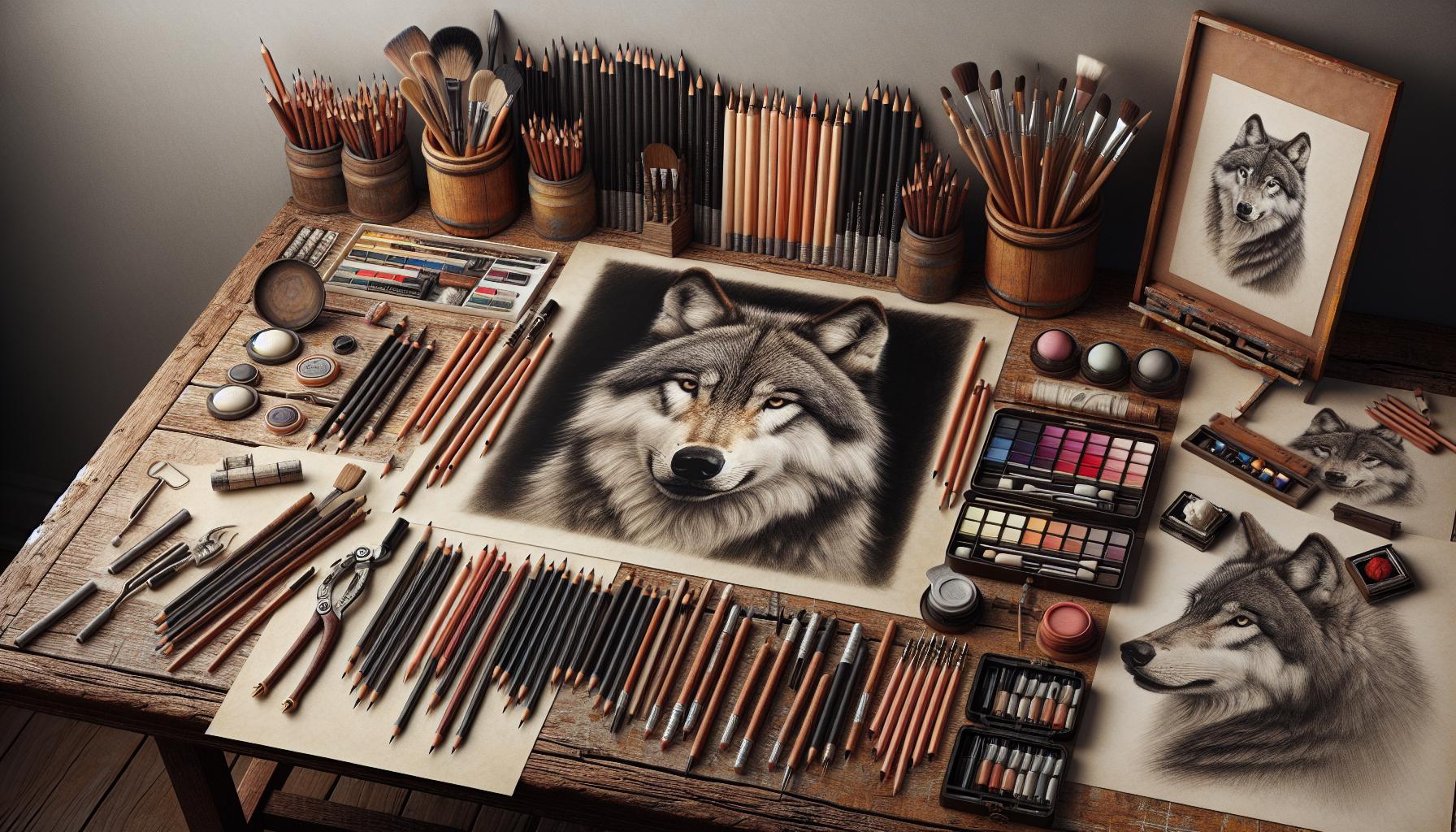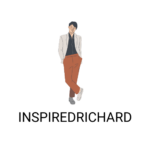Drawing wolves captivates artists of all skill levels with their majestic beauty and powerful presence. Whether you’re a beginner looking to sketch your first wolf or an experienced artist seeking to refine your technique “facil:mtp5otoc9_k= lobo dibujo” provides a straightforward approach to capturing these magnificent creatures on paper.
From mastering the basic shapes to adding intricate details like fur texture and expressive eyes this guide breaks down the wolf-drawing process into simple manageable steps. Artists will discover how to bring their lupine subjects to life while developing essential drawing skills that’ll carry over into other wildlife artwork. It’s time to unleash your inner artist and learn the secrets of creating stunning wolf illustrations that’ll make others howl with admiration.
Facil:mtp5otoc9_k= Iobo Dibujo
Drawing a wolf starts with mastering basic geometric shapes that form the foundation. Artists begin by sketching a large oval for the body and a circle for the head. Connecting these shapes creates the initial framework for the wolf’s structure.
The head requires careful attention to proportions. Artists place the eyes approximately halfway down the face, spacing them one eye-width apart. The muzzle extends from the center of the face using triangular shapes that taper toward the nose.
Proper body proportions enhance the wolf’s realistic appearance:
- Shoulders sit higher than the hindquarters
- Legs measure approximately 1.5 times the body depth
- Neck extends about one-third the length of the body
- Tail reaches roughly two-thirds of the body length
Adding anatomical details brings the wolf to life:
- Muscular definition around shoulders and haunches
- Large paw pads with visible toe segments
- Pointed ears positioned at 45-degree angles
- Distinctive facial markings and fur patterns
Key measurements for wolf features:
| Feature | Proportion |
|---|---|
| Head size | 1/4 of body length |
| Eye placement | 1/2 way down skull |
| Leg length | 1.5x body depth |
| Ear length | 1/2 head length |
- Short strokes for undercoat definition
- Longer strokes following muscle contours
- Varied pressure for depth and dimension
- Directional lines matching natural fur growth
Basic Wolf Anatomy and Structure

Wolf anatomy comprises distinct features that create their iconic silhouette. Understanding these fundamental elements enables artists to capture the essence of these magnificent creatures accurately.
Head and Face Features
The wolf’s head exhibits a triangular shape with a pronounced muzzle extending 3-4 inches from the face. Their almond-shaped eyes sit at a 45-degree angle on either side of the face, positioned approximately one eye-width apart. The ears stand erect atop the head in a triangular form, measuring 4-5 inches in length. A wolf’s snout contains powerful jaws with 42 teeth, including prominent canines measuring up to 2.5 inches long. The nose appears broad with large nostrils, while distinctive facial markings often include darker fur around the eyes extending toward the muzzle.
Body Proportions
A wolf’s body maintains specific proportions that define its athletic build. The shoulder height measures 26-32 inches, with the body length from nose to tail spanning 4-6.5 feet. Their chest depth equals 30% of their total height, creating a deep-chested appearance. The legs comprise 40% of the total height, with the front legs slightly shorter than the hind legs. The tail extends 13-20 inches, typically hanging straight or slightly curved. The neck thickness matches the head width, creating a seamless transition between head and shoulders. Adult wolves maintain a height-to-length ratio of approximately 1:1.2, ensuring proper proportional representation in drawings.
Essential Drawing Materials

Quality art supplies enhance wolf drawing precision. Here’s a comprehensive list of essential materials:
Drawing Papers
- Bristol board (98 lb) for detailed fur textures
- Sketch paper (70 lb) for initial practice sketches
- Toned gray paper for dramatic contrast effects
Graphite Pencils
- 2H pencils for light initial sketches
- HB pencils for basic shapes
- 2B pencils for medium shading
- 6B pencils for deep shadows
Specialty Tools
- Kneaded eraser for highlighting fur
- Blending stumps for smooth transitions
- Mechanical pencil (0.5mm) for fine details
- White gel pen for eye highlights
| Material Type | Purpose | Recommended Brand |
|---|---|---|
| Bristol Board | Final Artwork | Strathmore 300 Series |
| Graphite Set | Core Drawing | Staedtler Mars Lumograph |
| Blending Tools | Texture Creation | Prismacolor Premier |
- Drawing board for stable surface
- Artist tape for securing paper
- Battery-operated eraser for precise corrections
- Reference photos of wolves
These materials create varying textures essential for wolf features:
- Fine lines for whiskers
- Broad strokes for fur masses
- Layered shading for depth
- Sharp details for eyes
Each tool serves specific purposes in wolf illustration, from capturing the coarse outer coat to rendering delicate facial features. The combination of these materials enables artists to achieve realistic wolf representations with proper texture depth.
Step-by-Step Wolf Drawing Process

Creating a realistic wolf drawing involves a systematic approach that builds from simple shapes to detailed features. This sequential process ensures accurate proportions and natural-looking results.
Basic Shapes and Guidelines
The foundation of a wolf drawing starts with basic geometric forms. A large oval forms the main body while a smaller circle represents the head position. The leg placement requires four straight lines at angles matching the wolf’s stance. Adding construction lines divides the face into thirds, marking precise positions for the eyes, nose, and mouth. The neck connects to the body using two curved lines that flow into the chest area. A horizontal line through the body establishes the back angle and helps maintain proper proportions throughout the drawing.
Adding Details and Texture
Layering transforms basic shapes into a lifelike wolf representation. Short curved strokes create the fur pattern, starting from the neck and following the natural growth direction. The eyes gain depth through multiple tones, incorporating highlights and shadows. The muzzle develops texture through small diagonal lines that follow facial muscle structure. Long sweeping strokes define the tail fur, creating movement and volume. The legs gain dimension through varied pressure techniques that capture muscle definition and fur transitions. Strategic shading adds depth to the chest and underside areas, establishing the wolf’s three-dimensional form.
Shading Techniques for Wolf Fur
Layered pencil strokes create realistic wolf fur textures through strategic application of light medium dark values. Cross-hatching patterns establish the base coat using 2H pencils for lighter areas 4B pencils for darker regions. Directional strokes follow the natural growth pattern of wolf fur flowing from the spine outward.
- Base Layer Application
- Apply light pressure with 2H pencils to create underlying fur texture
- Establish primary fur direction using short controlled strokes
- Map out major light dark areas before detailed shading
- Texture Development
- Layer multiple strokes at varying angles for natural fur appearance
- Create depth by alternating pressure between strokes
- Add small irregular lines to break up uniform patterns
- Detail Enhancement
- Focus darker values around eyes nose ears
- Build fur thickness through overlapping stroke layers
- Include individual hair strands in key focal areas
- Highlight Integration
- Leave strategic areas unshaded for natural light reflection
- Add white highlights using kneaded erasers
- Create contrast between light dark areas for dimension
| Pencil Grade | Purpose | Pressure Level |
|---|---|---|
| 2H | Light fur base | Gentle |
| HB | Mid-tones | Medium |
| 4B | Dark areas | Firm |
| 6B | Deepest shadows | Heavy |
Tonal variations emerge through careful pressure control circular motions for undercoat texture. Sharp defined lines indicate guard hairs while softer strokes suggest downy fur underneath. Blending stumps smooth transitions between different fur densities creating cohesive realistic texture.
Common Mistakes to Avoid
Incorrect proportions create unrealistic wolf representations when artists place eyes too high or make legs too short. Drawing wolves with cat-like features diminishes their unique canine characteristics such as elongated muzzles distinctive eye shapes.
Several anatomical errors impact wolf drawings:
- Making the neck too thin for the muscular structure
- Drawing ears pointed straight up instead of slightly angled
- Creating rounded paws rather than the typical oval shape
- Placing the tail too high on the body
Texture mistakes affect the overall realism:
- Drawing fur in uniform direction instead of following natural growth patterns
- Adding excessive detail in shadow areas
- Creating harsh lines between light dark areas
- Applying consistent pressure throughout fur strokes
Key facial feature errors include:
- Overdrawing whiskers making them too prominent
- Positioning eyes at equal distances from nose bridge
- Drawing a flat nose instead of the angular wolf snout
- Creating round pupils instead of almond shaped ones
Perspective problems distort wolf anatomy:
- Misaligning shoulder height with hip level
- Drawing front legs identical to back legs
- Making paw pads visible from side views
- Creating symmetrical body sides in three quarter views
Color value mistakes reduce depth:
- Using single tone shading throughout the fur
- Neglecting core shadows under the jaw chest
- Missing reflected light on dark areas
- Ignoring atmospheric perspective in background elements
- Beginning with details before establishing basic shapes
- Skipping the initial skeletal framework
- Ignoring the natural curve of the spine
- Placing legs without considering weight distribution
Drawing wolves requires patience dedication and attention to detail. Through proper understanding of wolf anatomy careful material selection and consistent practice artists can create captivating illustrations that capture the essence of these magnificent creatures. The combination of basic geometric shapes proper proportions and layered shading techniques leads to realistic and engaging wolf artwork.
By following structured approaches and avoiding common pitfalls artists of all skill levels can develop their abilities and create impressive wolf drawings. The skills learned through wolf illustration extend beyond this specific subject serving as valuable tools for various wildlife art projects.

